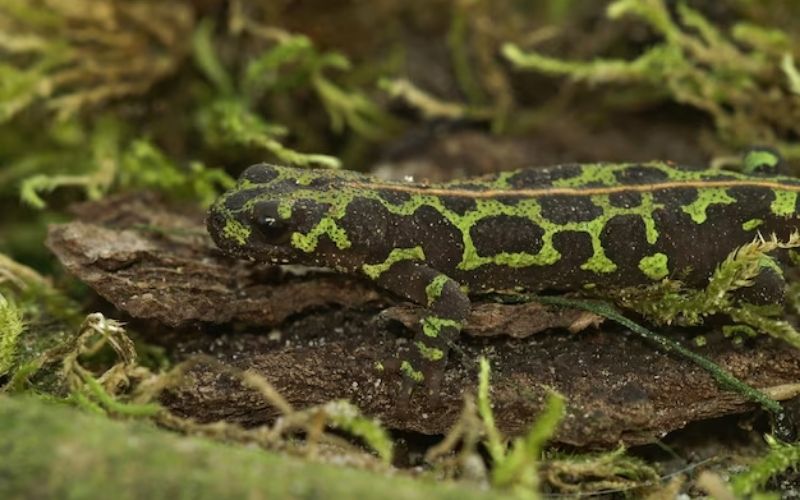Amphibians are a diverse group of animals that includes frogs, such as the American Bullfrog known for its loud, deep croaks, and the Leopard Frog with various green and brown shades. Salamanders, like the Spotted Salamander with its bright yellow spots and the fully aquatic Axolotl with its frilly gills, are also part of this group. Newts, a subcategory of salamanders, share similar characteristics. Lastly, Caecilians, the strange snake-like amphibians, complete this group. These creatures are characterized by their soft, moist skin, complex life cycle, and their ability to breathe through their skin.
They are cold-blooded vertebrates that usually live at least partially in water. Each species has its own unique characteristics and adaptations, making amphibians a fascinating group of animals.
What are Amphibians
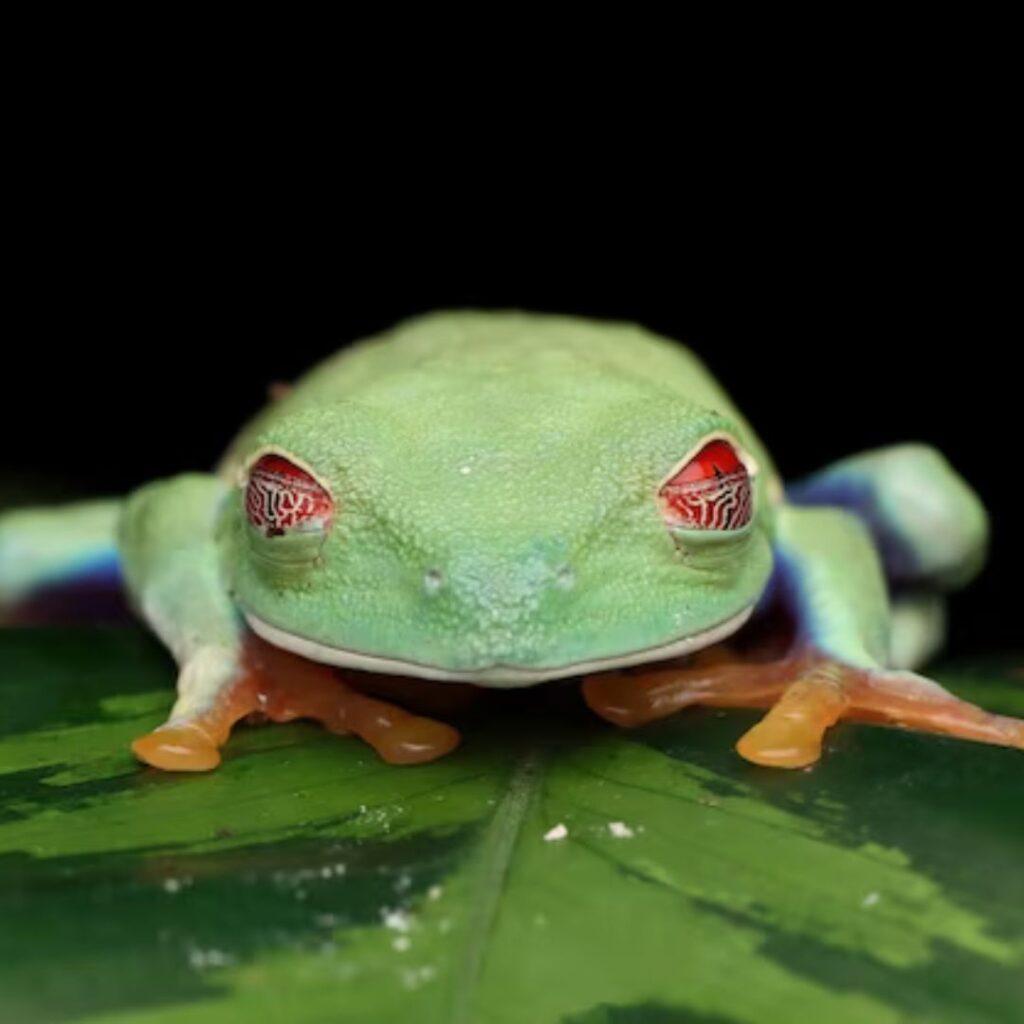
Amphibians are a group of animals characterized by their ability to live on land and in water during different life cycle stages. Amphibians form a captivating group of animals with their soft, almost slimy, moist skin and complex life cycles. Some common examples of amphibians include frogs, toads, salamanders, and newts. They are known for their smooth and moist skin and unique life cycles. In this blog, we embark on a journey to unravel the intricacies of various amphibian categories, delving into the lives of frogs, toads, salamanders, newts, and the mysterious caecilians.
Examples of Amphibians
Top 10 Examples of amphibians are given below;
Salamanders Amphibians
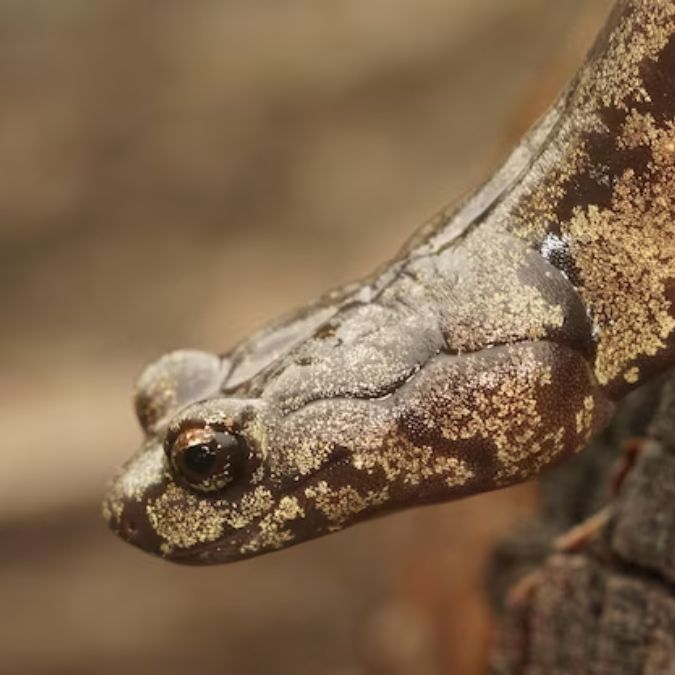
1. Spotted Salamander (Ambystoma maculatum)
- Description: The Spotted Salamander is recognized for its sleek black body adorned with vibrant yellow spots. It is a terrestrial species commonly found in deciduous woodlands across North America.
- Notable Feature: Known for its symbiotic relationship with a green alga, which lives inside its cells, providing a form of camouflage.
2. Fire Salamander (Salamandra salamandra)
- Description: The Fire Salamander is characterized by its striking black body with contrasting yellow or orange markings. Native to European forests, it is often associated with folklore and mythology.
- Notable Feature: Secretes toxins through its skin, serving as a defense mechanism against predators.
3. Eastern Red-Spotted Newt (Notophthalmus viridescens)
- Description: This remarkable newt undergoes a captivating life cycle, starting as a bright red juvenile on land before transitioning to an aquatic adult phase with distinctive red spots.
- Notable Feature: Exhibits aposematism, warning potential predators of its toxic nature through its bright coloration.
4. Mudpuppy (Necturus maculosus)
- Description: The Mudpuppy is a fully aquatic salamander with external gills, making it an excellent swimmer. It is commonly found in clear, cold streams and rivers.
- Notable Feature: Retains its juvenile external gills throughout its entire life, a unique feature among salamanders.
5. Tiger Salamander (Ambystoma tigrinum)
- Description: Recognizable for its bold black and yellow stripes resembling a tiger’s pattern, the Tiger Salamander is found in various habitats, including woodlands and grasslands.
- Notable Feature: Exhibits neoteny, with some individuals retaining their aquatic juvenile characteristics even as adults.
These salamanders showcase the diverse markings and adaptations within this group of terrestrial wonders. Each species contributes to the intricate ecosystems in which they reside, adding to the overall biodiversity of the natural world.
Newts Amphibians
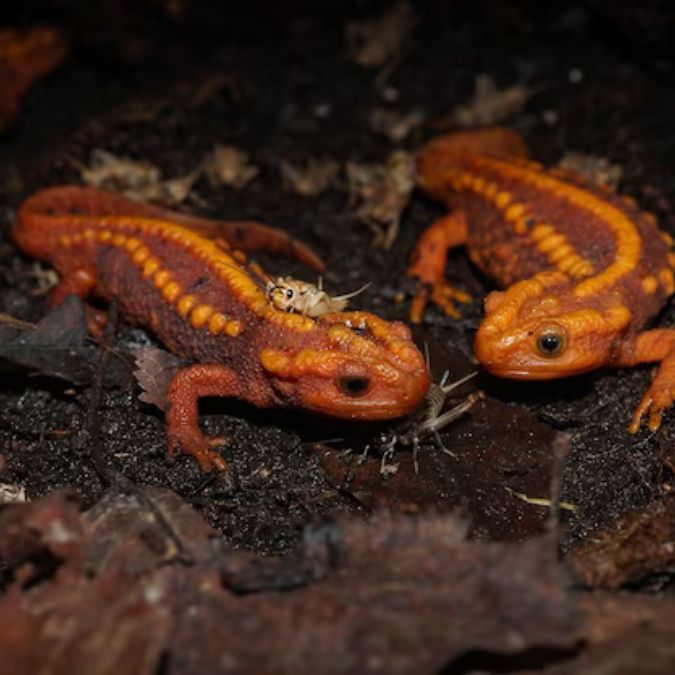
1. Great Crested Newt (Triturus cristatus)
- Interesting Fact: Recognized by its striking appearance, the Great Crested Newt is one of the largest European newt species. During the breeding season, males develop a prominent crest along their back, adding a regal touch to their appearance.
2. Alpine Newt (Ichthyosaura alpestris)
- Interesting Fact: Adapted to various habitats, the Alpine Newt is found in mountainous regions. During the breeding season, males undergo a remarkable color change, transitioning from a dull olive-green to vibrant blue along their back and sides.
3. Eastern Red-Spotted Newt (Notophthalmus viridescens)
- Interesting Fact: This captivating newt undergoes a fascinating life cycle, transitioning from a bright red juvenile terrestrial form known as an “eft” to an aquatic adult phase. This adaptation allows them to thrive in diverse environments.
4. Palmate Newt (Lissotriton helveticus):*
- Interesting Fact: Characterized by its distinctive palm-shaped hind feet, the Palmate Newt is a small and agile species. During the breeding season, males display vibrant colors, making them a delightful sight in wetland habitats.
5. Smooth Newt (Lissotriton vulgaris):*
- Interesting Fact: Among the most widespread newt species in Europe, the Smooth Newt is known for its smooth skin and varied coloration. Males develop a high, jagged crest during the breeding season, enhancing their attractiveness to potential mates.
Newts, with their semiaquatic lifestyles and captivating appearances, add charm to freshwater ecosystems. Each species brings its own flair to the world of amphibians, showcasing the beauty of adaptation and diversity within this unique group of creatures.
Frogs and Toads Amphibians
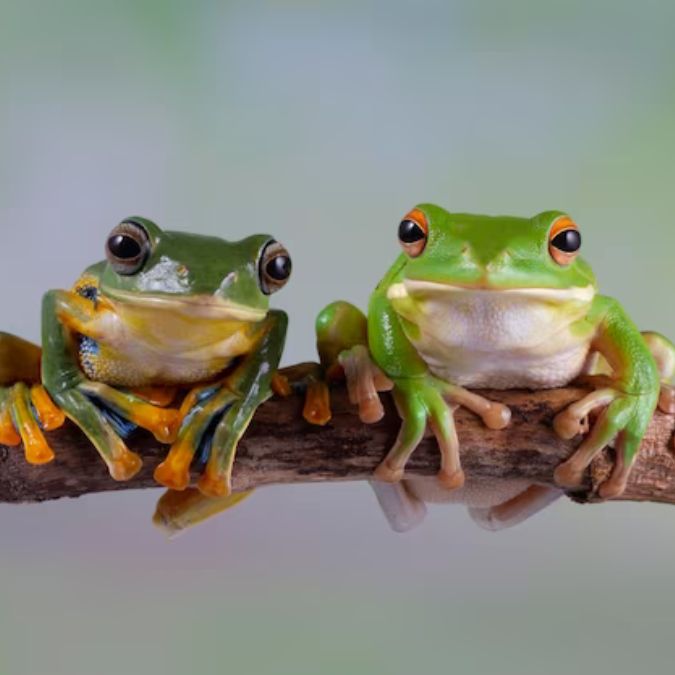
1. Poison Dart Frog (Dendrobatidae family)
- Interesting Fact: Hailing from Central and South America, Poison Dart Frogs are renowned for their stunning and vivid colors, which serve as a warning to predators about their highly toxic skin secretions. Some species’ toxins are potent enough to be used by indigenous people to poison blowdarts for hunting.
2. Red-Eyed Tree Frog (Agalychnis callidryas)
- Interesting Fact: Occupying the rainforests of Central America, the Red-Eyed Tree Frog is a visually striking amphibian with vibrant green and blue hues, distinctive red eyes, and webbed feet. Despite its vivid appearance, it is primarily nocturnal and spends its days resting on leaves.
3. American Bullfrog (Lithobates catesbeianus)
- Interesting Fact: Known for their resonant and deep croaks, American Bullfrogs are among the largest frog species, found in North America. These vocalizations are integral to their communication and territory establishment, creating a symphony in wetland habitats.
4. Green Tree Frog (Hyla cinerea)
- Interesting Fact: Found in the southeastern United States, the Green Tree Frog is characterized by its bright green coloration and adhesive toe pads. These nocturnal amphibians play an essential role in controlling insect populations and contribute to the acoustic charm of their habitats.
5. Colorado River Toad (Incilius alvarius)
- Interesting Fact: Inhabiting the deserts of the southwestern United States and Mexico, the Colorado River Toad secretes a potent venom known as 5-MeO-DMT. This substance has hallucinogenic properties and is sometimes collected by enthusiasts for its psychoactive effects.

